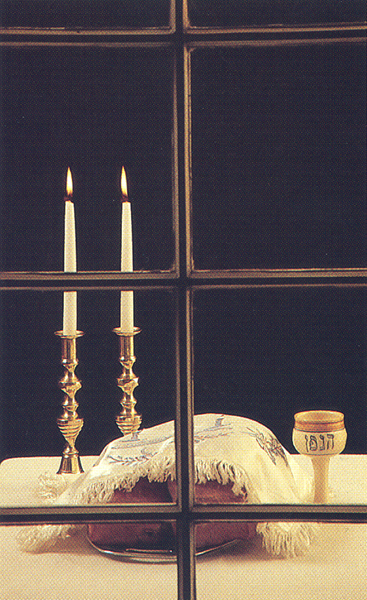Image Details

Bill Aron
Bread and wine play crucial roles today in the Christian mass, as the eucharist, and in the Jewish Friday night Sabbath meal, where wine and two loaves of braided challah (under the cloth cover) are blessed and eaten. Both traditions are metaphoric remembrances of Temple offerings.
In Jewish tradition, the Sabbath is ushered in by the woman of the house (or a man if no woman is present) lighting two candles and blessing them, one “to remember the Sabbath day” (Exodus 20:8) the other “to observe the Sabbath day” (Deuteronomy 5:12). After sundown, the kiddush, a prayer to consecrate the Sabbath, is recited over a cup of wine. A blessing is then made over the challah. The bread is baked in remembrance of God’s instruction to Moses to place two rows of six challot each on a table before the Lord in the tent of meeting. This was done “regularly every Shabbat—it is a commitment for all time on the part of the Israelites” (Leviticus 24:8). After the Romans destroyed the Jerusalem Temple around 70 C.E., the Sabbath table with two loaves became a remembrance of the Temple altar.
